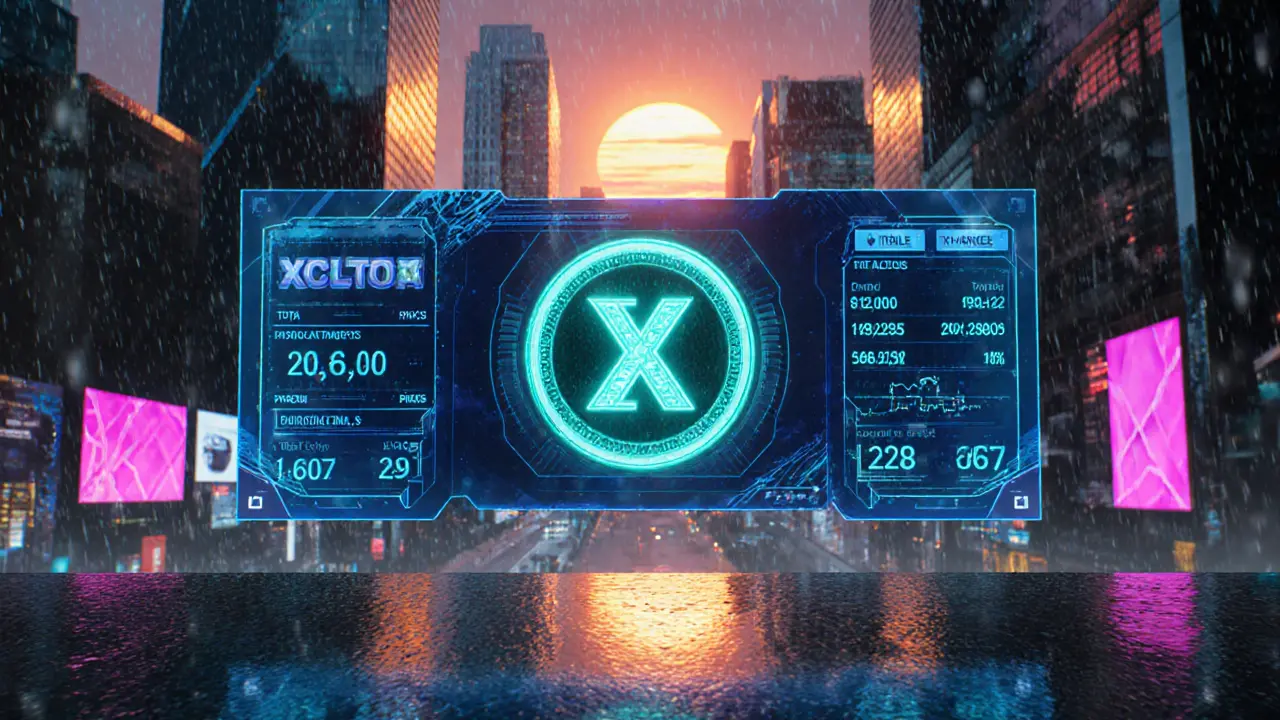Profit Sharing Calculator
How Much Could You Have Earned?
Enter hypothetical trading volume to see what your EXP token would have earned under EOSex's model. Remember: EOSex failed because it had no volume to distribute profits.
Based on 0 monthly volume at 0% profit margin
Back in 2018, EOSex promised something no other crypto exchange dared to: 100% of its profits going straight to holders of its EXP token. No shareholders. No corporate greed. Just a simple, transparent model where everyone who held EXP got a share of what the exchange made. It sounded too good to be true - and in many ways, it was.
The Pitch: A Community-Owned Exchange
EOSex wasn’t built to compete with Binance or Coinbase. It was built for the EOS community. Launched in late 2018, it positioned itself as the first hybrid exchange supporting EOS, TRON, and Ethereum - letting users trade across chains without needing multiple platforms. That was ambitious. At the time, most decentralized exchanges were slow, clunky, and hard to use. Centralized ones were fast but opaque. EOSex claimed to blend the best of both: speed from a centralized backend, with the fairness of a decentralized model. Its core idea was radical. Every dollar earned from trading fees, listing fees, or other revenue streams was distributed to EXP token holders. No exceptions. No hidden cuts. The team claimed this created a true ownership economy - users weren’t just customers, they were stakeholders. This wasn’t just marketing. It was baked into the tokenomics. If you held EXP, you were technically co-owning the exchange.How It Was Supposed to Work
EOSex operated on a hybrid model. That meant orders were matched on a centralized server for speed, but settlements and profit distributions happened on-chain via smart contracts. The EXP token was the glue. You didn’t need to stake it to trade. You just needed to hold it. Profits were distributed periodically - though exact timing was never clearly defined. Some users reported monthly payouts. Others saw irregular distributions. No public ledger showed real-time profit calculations, which raised eyebrows. The platform supported wallets like Scatter and Ledger for EOS, MetaMask for Ethereum, and TronLink for TRON. That made it accessible. No complicated new wallet. No forced KYC. At least, not at first. The team promoted it as a trustless, permissionless experience - a big deal when most exchanges demanded ID verification just to deposit $50.Why It Stood Out (Briefly)
In 2018, the crypto world was flooded with exchanges. Most were clones of Binance with slightly different logos. EOSex stood out because it didn’t just take your money - it gave some back. That’s rare. On Binance, profits go to shareholders. On Coinbase, to executives and investors. On EOSex, if you held EXP, you got a slice. For EOS token holders, this was a rare chance to align their holdings with a platform built for their chain. The Steemit and Ecency communities praised it. One popular post called it “The Best Crypto Exchange of 2019.” But here’s the catch: that post was written by someone who ran the EOSex bounty program. It wasn’t an independent review. It was promotional content wrapped in user testimonials. No major crypto publications like CoinDesk, Cointelegraph, or Decrypt ever covered it seriously. No analyst reports. No third-party audits. Just community blogs and official announcements.
The Missing Pieces
For all its bold claims, EOSex never delivered transparency. There were no public dashboards showing daily trading volume. No real-time profit totals. No breakdowns of how much each EXP holder received. No API documentation. No mobile app. No customer support records. Even the official website, eosex.com, now redirects to a placeholder page. The domain is inactive. The last social media update? Late 2019. The EXP token still exists on some block explorers, but it trades for fractions of a cent - if at all. CoinCodex lists it as “inactive.” No exchanges list it. No wallets support it as a spendable asset. The project vanished right after the 2018-2019 bear market hit. While Binance grew 10x and Uniswap exploded, EOSex went silent.Why It Failed
Three big reasons killed EOSex:- No liquidity. Without trading volume, there were no profits to distribute. If no one traded, the model collapsed. The platform never attracted enough users to sustain even minimal activity.
- Regulatory risk. A 100% profit-sharing token looks a lot like a security under U.S. law (Howey Test). The SEC doesn’t look kindly on platforms that promise returns based on the efforts of others. EOSex never filed for an STO or legal compliance - a huge red flag.
- No team updates. After 2019, the team disappeared. No blog posts. No Twitter updates. No GitHub commits. No community AMAs. When a project goes quiet like that, it’s rarely a good sign.

What You Should Know Today
If you’re thinking about buying EXP tokens now, don’t. There’s no exchange to trade them on. No way to withdraw them. No customer support to contact. The entire ecosystem is dead. The website is gone. The social media accounts are abandoned. The token has no utility. EOSex wasn’t a scam in the traditional sense - it didn’t steal funds. But it was a classic example of a project that built hype around a great idea, then failed to execute. It didn’t have the engineering resources, marketing budget, or regulatory foresight to survive beyond the crypto boom.What You Can Learn From EOSex
Even though EOSex is gone, its lessons are still useful:- Never trust a crypto exchange that doesn’t show real trading volume or profit data.
- Profit-sharing models sound fair - but if the exchange isn’t making money, you won’t get paid.
- Always check if a project has been active for more than 2 years. If not, assume it’s dead.
- Don’t fall for “community-owned” claims unless there’s verifiable on-chain proof of distributions.
- If no reputable crypto site has reviewed it, that’s usually a sign it’s not taken seriously.
EOSex was a noble experiment. But in crypto, good ideas die every day without execution, liquidity, or transparency. It’s a cautionary tale - not a success story.
Is EOSex still operational in 2025?
No, EOSex is not operational. The website no longer loads, the EXP token has no trading activity, and all official communication stopped after 2019. There is no active team, no support, and no way to access funds or trade on the platform.
Can I still trade or withdraw EXP tokens?
No. EXP tokens are not listed on any active exchange. No wallet supports deposits or withdrawals for EOSex. Even if you hold EXP tokens in your wallet, they have no value or utility. The platform that issued them is defunct.
Was EOSex a scam?
It wasn’t a classic scam where funds were stolen - but it was a failed project that made unrealistic promises. It never delivered on its core claim of profit-sharing because it never generated enough trading volume. The lack of transparency, regulatory compliance, and ongoing development makes it a high-risk, dead project.
Why did EOSex target the EOS community?
EOS was one of the hottest blockchains in 2018, with high network activity and a passionate user base. EOSex aimed to capture that community by offering a dedicated exchange with low fees and profit-sharing - something no other exchange offered for EOS holders at the time. But the broader crypto market crashed, and EOS lost momentum, leaving EOSex without enough users to survive.
Are there any similar exchanges today?
No direct equivalent exists today. Some decentralized exchanges like Uniswap or dYdX let users earn fees through liquidity provision, but they don’t share platform profits with token holders. Centralized exchanges like Kraken or Bitstamp offer staking rewards, but those are separate from trading profits. The EOSex model - 100% profit-sharing with token holders - remains unused by any major platform today due to legal and operational complexity.






